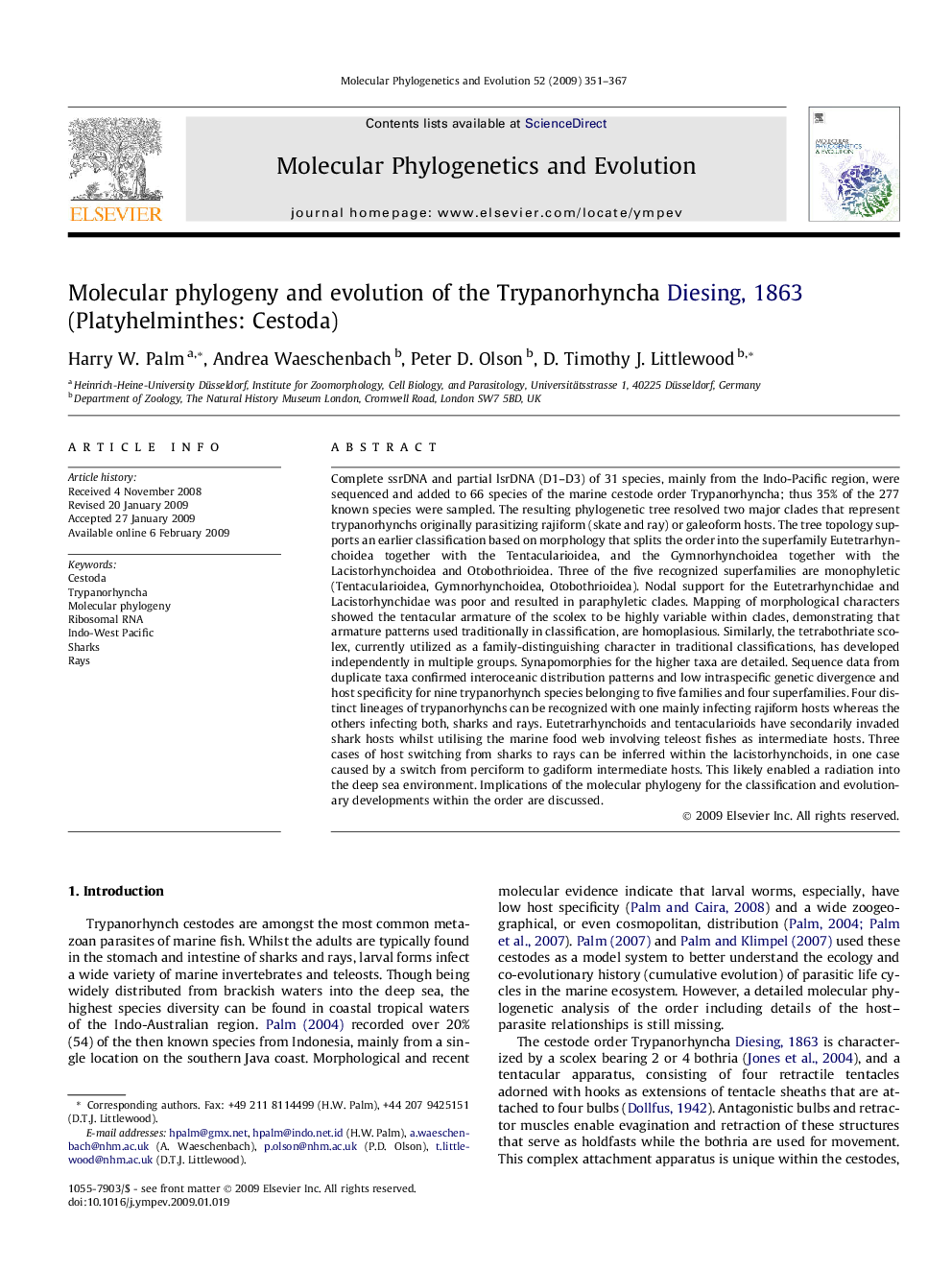| کد مقاله | کد نشریه | سال انتشار | مقاله انگلیسی | نسخه تمام متن |
|---|---|---|---|---|
| 2834395 | 1164311 | 2009 | 17 صفحه PDF | دانلود رایگان |

Complete ssrDNA and partial lsrDNA (D1–D3) of 31 species, mainly from the Indo-Pacific region, were sequenced and added to 66 species of the marine cestode order Trypanorhyncha; thus 35% of the 277 known species were sampled. The resulting phylogenetic tree resolved two major clades that represent trypanorhynchs originally parasitizing rajiform (skate and ray) or galeoform hosts. The tree topology supports an earlier classification based on morphology that splits the order into the superfamily Eutetrarhynchoidea together with the Tentacularioidea, and the Gymnorhynchoidea together with the Lacistorhynchoidea and Otobothrioidea. Three of the five recognized superfamilies are monophyletic (Tentacularioidea, Gymnorhynchoidea, Otobothrioidea). Nodal support for the Eutetrarhynchidae and Lacistorhynchidae was poor and resulted in paraphyletic clades. Mapping of morphological characters showed the tentacular armature of the scolex to be highly variable within clades, demonstrating that armature patterns used traditionally in classification, are homoplasious. Similarly, the tetrabothriate scolex, currently utilized as a family-distinguishing character in traditional classifications, has developed independently in multiple groups. Synapomorphies for the higher taxa are detailed. Sequence data from duplicate taxa confirmed interoceanic distribution patterns and low intraspecific genetic divergence and host specificity for nine trypanorhynch species belonging to five families and four superfamilies. Four distinct lineages of trypanorhynchs can be recognized with one mainly infecting rajiform hosts whereas the others infecting both, sharks and rays. Eutetrarhynchoids and tentacularioids have secondarily invaded shark hosts whilst utilising the marine food web involving teleost fishes as intermediate hosts. Three cases of host switching from sharks to rays can be inferred within the lacistorhynchoids, in one case caused by a switch from perciform to gadiform intermediate hosts. This likely enabled a radiation into the deep sea environment. Implications of the molecular phylogeny for the classification and evolutionary developments within the order are discussed.
Journal: Molecular Phylogenetics and Evolution - Volume 52, Issue 2, August 2009, Pages 351–367